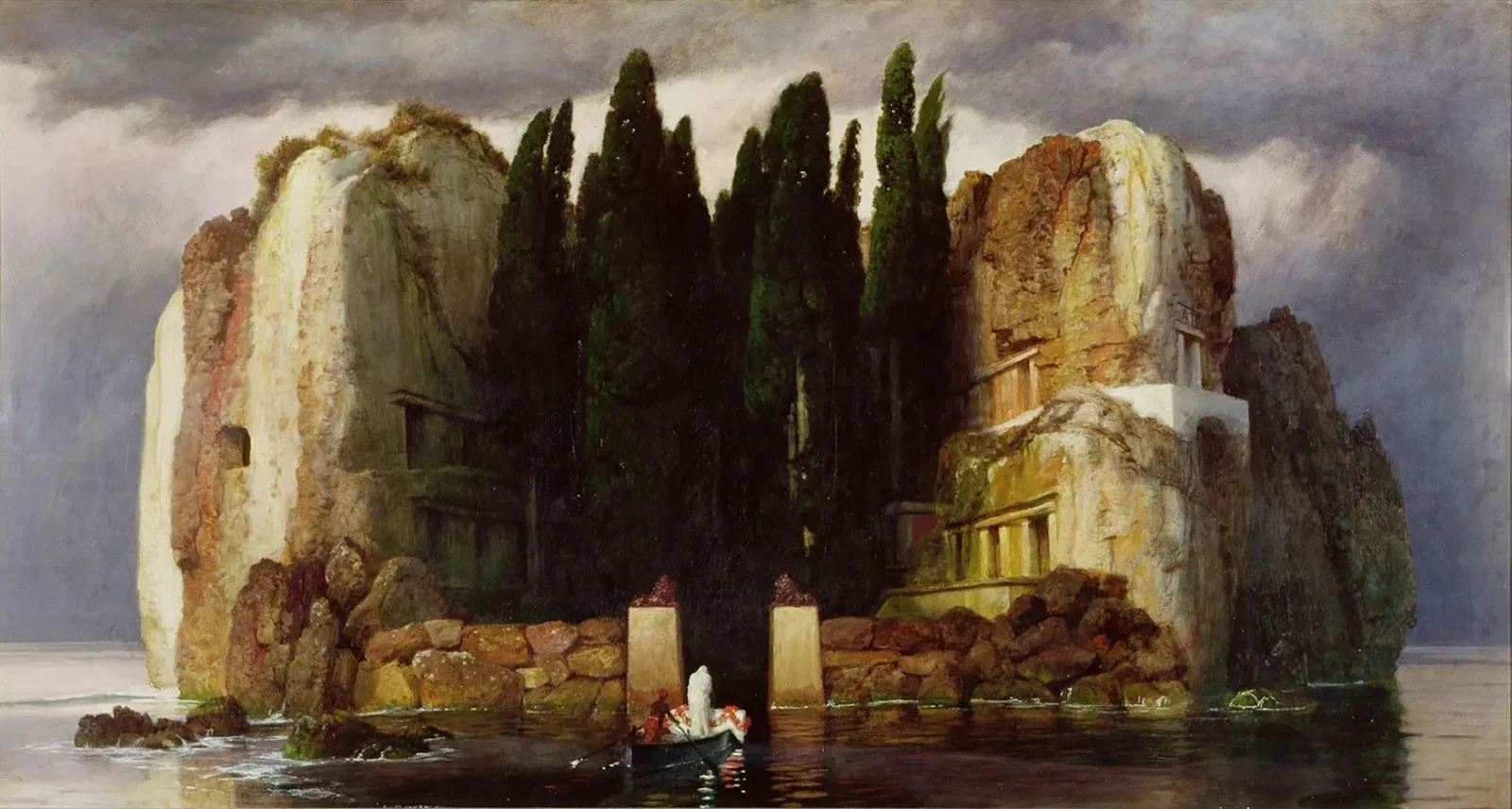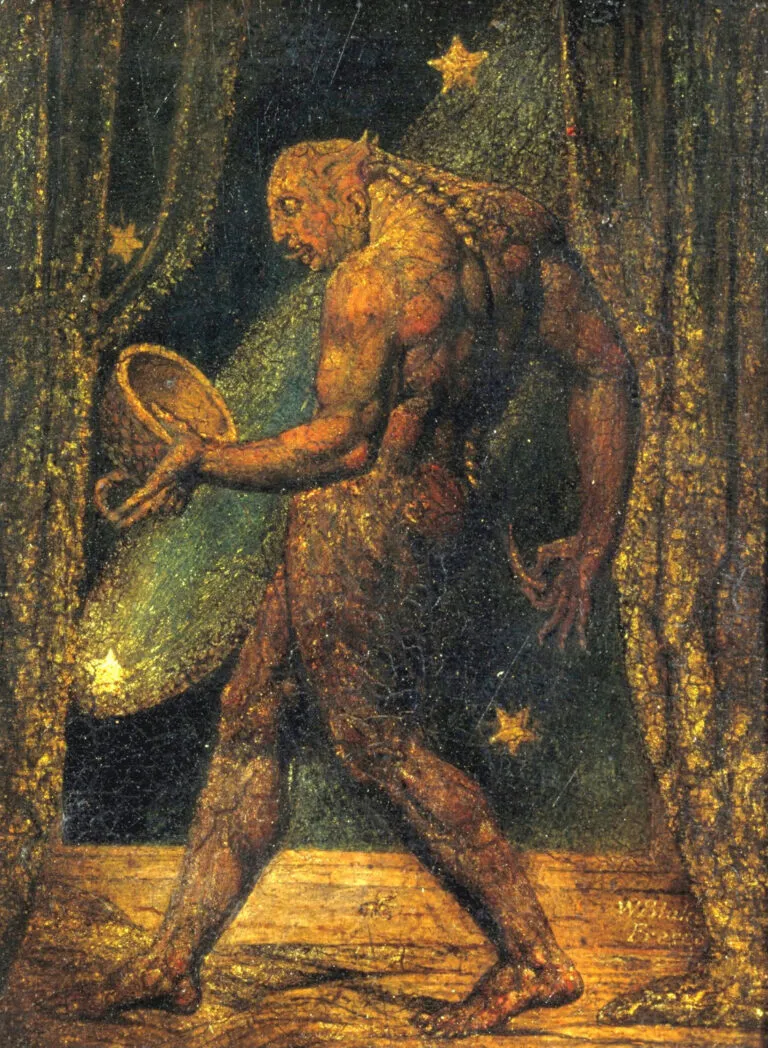Arnold Böcklin – The Painter of Unease and Symbolism
Introduction
Arnold Böcklin – The Painter of Unease and Symbolism (1827-1901) is a Swiss artist whose works have left an indelible mark on the art world, especially for their ability to evoke atmospheres of mystery and unease. Considered one of the leading figures of symbolism, Böcklin explored mythological, fantastical, and supernatural themes, creating images that challenge reality and invite the viewer to immerse themselves in enigmatic and evocative worlds. His most famous work, *The Isle of the Dead*, is an icon of mysticism and horror, continuing to influence artists and writers to this day.
The Life of Arnold Böcklin
Born on October 16, 1827, in Basel, Switzerland, Arnold Böcklin displayed an early talent for art. He studied at the Academy of Fine Arts in Düsseldorf, where he was a pupil of Johann Wilhelm Schirmer and Carl Friedrich Lessing, influenced by the Romantic movement and landscape painting. During his travels in Italy, Böcklin was deeply moved by Renaissance art and the Mediterranean landscape, elements that would profoundly mark his work.
Italy became his second homeland, and he spent much of his life there. His experiences in Rome, Florence, and Naples fed his imagination and led him to develop a unique style that combined naturalistic elements with a strong symbolic and fantastical component. Böcklin died on January 16, 1901, in Fiesole, near Florence, leaving an artistic legacy that continues to be explored and admired.
 Themes and Style
Themes and Style
Böcklin’s works are characterized by a mix of mythology, allegory, and evocative landscapes. His paintings often depict mythological and fantastical scenes populated by creatures such as nymphs, centaurs, and sirens. These elements, combined with detailed natural settings and atmospheres charged with mystery, create a world that seems suspended between dream and reality.
One recurring theme in Böcklin’s work is death and the afterlife. The Isle of the Dead, painted in five versions between 1880 and 1886, is the work that best embodies this obsession. The painting depicts a dark and unsettling island, with a solitary cypress towering at its center, evoking a sense of isolation and eternal silence. The figure in white heading toward the island in a boat adds an element of solemnity and mystery, making the work a powerful symbol of the unconscious and mortality.
Technique and Influences
Böcklin was a master of painting technique, capable of creating rich and detailed textures through the skillful use of color and light. His landscapes are often characterized by a bright and vibrant atmosphere, contrasting with the presence of mythological and supernatural figures, creating an effect of estrangement and wonder.
The influence of German Romanticism is evident in his work, particularly the interest in the sublime and the mysterious. Artists like Caspar David Friedrich, with their evocative representations of nature, had a significant impact on Böcklin. However, his unique style and personal vision distinguished him from his contemporaries, making him a key figure in symbolism.
 Legacy and Influence
Legacy and Influence
The work of Arnold Böcklin has had a lasting influence on numerous artists and subsequent movements. Symbolism, surrealism, and even the Gothic movement have drawn inspiration from his work. Artists such as Giorgio de Chirico, Salvador Dalí, and Max Ernst have acknowledged their debt to Böcklin for his ability to transform reality through imagination.
His most iconic work, The Isle of the Dead, has inspired musicians, writers, and filmmakers. Rachmaninoff composed a symphonic poem based on the painting, and the theme of the mysterious island has been explored in numerous novels and films. Böcklin’s ability to evoke atmospheres of mystery and unease continues to resonate in contemporary culture, making his work eternally relevant.
Conclusion
Arnold Böcklin – The Painter of Unease and Symbolism remains a central figure in 19th-century art, a master capable of transporting the viewer into fantastical and mysterious worlds. His exploration of mythological, supernatural, and symbolic themes has left an indelible mark on art history, influencing generations of artists and continuing to inspire with his unique and unsettling vision. Böcklin transformed reality through the prism of imagination, creating works that invite reflection and dreams, opening new horizons in art and the perception of the world.
Don’t miss reading articles on other Horror Painters in our Top 10… they have explored the depths of human anguish and terror, creating works that continue to challenge and fascinate viewers. Their ability to evoke intense emotions through art has made them fundamental figures in the global artistic landscape.

Subscribe to our YouTube channel

 Themes and Style
Themes and Style Legacy and Influence
Legacy and Influence




